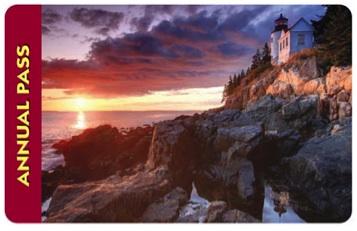Interior Department officials need to rethink the fees that are charged for annual park passes.
The current fee structure just doesn't make sense, and works at odds with the National Park Service's stated desire to see younger generations fall in love with the National Park System.
It was back in 2006 that the old $50 annual parks pass was phased out by the Bush administration in favor of the $80 America the Beautiful National Parks and Federal Lands Recreation Pass. At the time, then-Deputy Interior Secretary Lynn Scarlett called the pass "a cost-effective and easy option for those who plan to visit multiple federal recreation sites."
That might be so, but the rates for the passes need to be revised.
Why charge anyone who has reached 62 years old (or three years below the Internal Revenue Service's currently recognized retirement age) just $10 for a lifetime pass to all 394 units in the system, and at the same time charge someone just starting out their adult life $80 for the same pass with another significant difference: it expires 12 months later?
While we at the Traveler generally frown on park entrance fees, it's obvious that they're not going to go away anytime soon. But they could be made more equitable. Indeed, adjusting these fees could very possibly increase revenues for the National Park Service while possibly encouraging more young adults to visit the parks.
Let's look at some numbers.
In 2010, purchases of the annual $10 interagency senior pass raised $4,956,076, while sales of the annual $80 pass raised $20,327,810. Doubling the seniors' pass to $20 could turn that $4.9 million into $10 million. Do away with the "lifetime" duration of the pass and the numbers jump higher.
True, if you returned the cost of the annual parks pass back to $50, the annual revenue theoretically would fall to around $12.7 million. But that's not as significant as it might seem.
Using 2010's income figures, those changes -- upping the senior pass fee to $20 for a one-year pass and reducing the annual pass fee to $50 -- on the face of things would trim the Park Service's annual take to $22.7 million from $25.2 million. But if the senior pass were both increased to $20 and had to be renewed every year, the paper loss most likely would turn into a gain.
The guess here, too, is that a drop in the annual pass from $80 to $50 very likely would spur more annual pass sales, too, and so the chance of an overall decline in pass revenues would vanish.
If the National Park Service truly is concerned about declining park visitation and younger generations losing interest in the parks, charging those under 62 $80 for an annual pass is not the way to solve either of those concerns.




Comments
Really? You are comparing the park fees to Disney World fees. Talk about apples to oranges. Disney world is a commercial venture that builds and maintains atractions. The Park Service administers our lands for the enjoyment of us and our future generations. The question I ask is what are we getting for these increased fees? Using Yellowstone as an example, we see a lot of road construction. One project in particular routes the road away from wery scenic areas from Cascade Falls North towards Norris Geyser Basin. Great, went from a nice canyon ride to a trip through more lodgepole pine monoculture. This project took all the enjoyment out of this ride in the name of efficiency. While these expenses are continuous, are they fixing the trails that are in disrepair like the trail to the bottom of Tower Falls? NO! Can I still use the roads in winter on a snowmobile? NO (unless in a guided tour). I find that most of the parks management and funding is used to get us in and get us out. I don't see lots of funding used to enhance our enjoyment of the Parks Resources. At todays Park rates, there is little advantage to buying an $80 pass unless you live next door or do an annual tour of the parks.